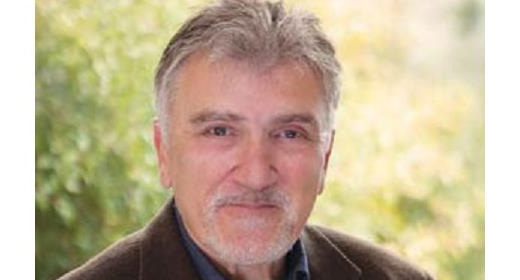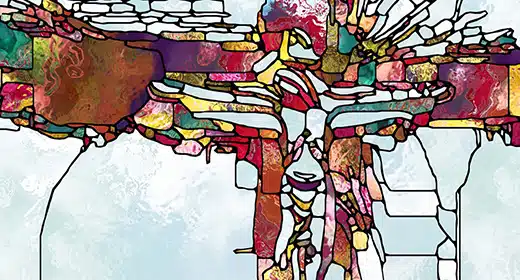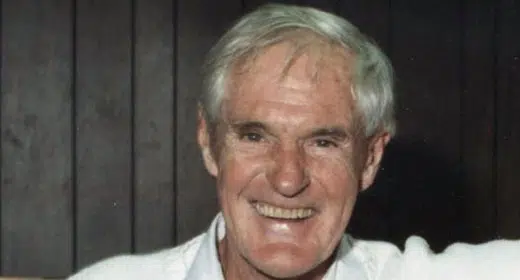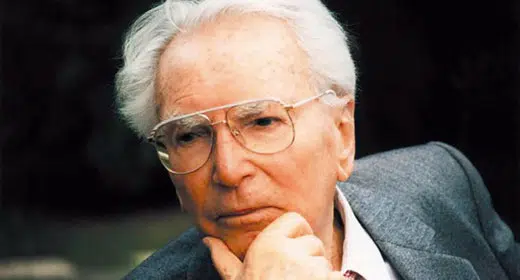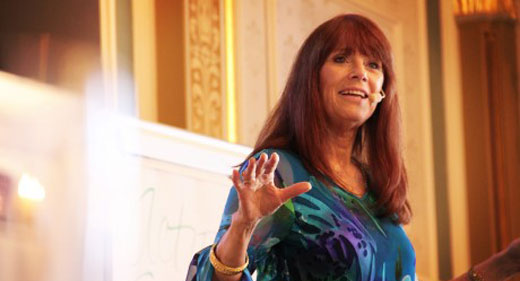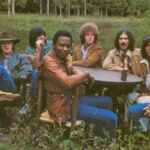by Robert Thurman Ph. D: When I first went to India in 1961, I was looking for yoga…
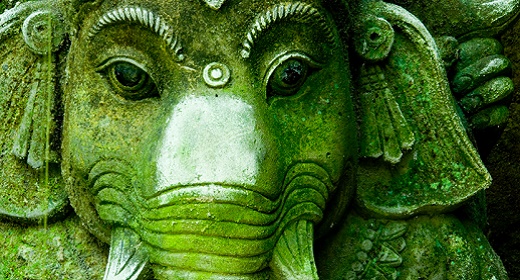
I was not seeking a particular “ism”Hinduism, Buddhism, Sufism, or whatever. I had studied some Eastern philosophies in college and I liked their ideas as reflected in Thoreau, Nietszche, Wittgenstein, Jung, and Hesse. I urgently wanted to join my knowledge to my life, to experience whatever turned out to be the “real” reality. I wanted to yoke my whole beingsensation, emotion, thought, and deepest awarenessto “truth,” whatever it might turn out to be. I left the West because, except for the Delphic oracle’s maxim “know thyself,” its authorities all said you could not know reality.
We are all philosophers, all scientists. Not only intellectuals know what is real and what is unreal. Everyone must know who they are, where they are, what they are doing, and what they should do. In ordinary life we have a better chance of success when we know the situation accurately. We can cook a good meal with the right ingredients and know-how to prepare them. A journey goes well when we know the way. Why should reality be any different? Why should we accept that we can’t know the vital things but must just follow orders, without any right to question authority or see for ourselves? Materialistic philosophy and mechanistic science tell us we can’t know anything that really matters: Consciousness is an illusory epiphenomenon of the brain, the brain is a material entity, and a material thing cannot know itself. This is where our Western, so-called “civilization” leaves us at the present moment.
Indic civilization traveled a different road around 2,500 years ago. The Indian sages took an inward turn. Like the Greeks, Egyptians, and Hebrews of that day, they sought the highest good, true and durable happiness for all beings. They all had decided the gods weren’t able to deliver this highest good or else they would have done so long ago. So humans must do something on their own. The Greeks turned to outer nature and embarked on the long project of material progress, to master the physical world to serve human happiness. The Indians also developed sophisticated systems of botany, zoology, chemistry, and biology to support their sophisticated medicine; astronomy and mathematics to support their fit in the seasonal cycles; engineering and architecture to support their built environment; sociology, economy, politics, logic, and linguistics to manage their vast and diverse populations. And like Plato and the Hebrew prophets, they used religion and philosophy to care for the soul. But their inward turn caused them to do something special. Their philosophy created a science of the soul and they crowned it “king of all sciences.”
When you experience a pleasant or unpleasant day, they reasoned, outer conditions are important, but your mind is the deciding factor in causing happiness or suffering. If your mind is in an uproar, you will not be happy even in the best of conditions. If your mind is serene and joyful, then you will remain cheerful even in adverse conditions. Therefore, while physical circumstances should not be neglected, your mental circumstance is of prime importance. Just as the gods did not deliver physical perfection, they seemed incapable of bestowing mental perfection. Therefore, humans must turn a scientific, systematic attention to the mind, master its energies, ameliorate its qualities, and, if possible, enable it to achieve a permanent endowment of the real happiness all seek. The science that emerged from this Indian inward turn was called Adhyatmavidya, or inner science; all the other sciences were called outer sciences. This tradition has continued uninterrupted in India for the last 2,500 years.
Inner science focuses on the soul, spirit, and mind as embodied in the physical body in its environment. It is not simply a name for religious mind control through belief and ritual. It develops various theories but is primarily an experimental science, proceeding by contemplative observation of the mind, senses, emotions, and intellectual faculties. Its laboratory is the mind-body complex itself, as well as the whole range of mental states experienced in waking, dreaming, sleep, meditative trance, and even out-of-body, virtual reality situations. Its technology is yoga, the yoking of conscious attention to empirical exploration, transformative discovery, and healing modification.
The inner scientists, the yogins and yoginis of these last 25 centuries, were usually religious or at least spiritual persons belonging to a Buddhist, Jain, Hindu, or other movement, although a few were materialists using the yogic technologies mainly to enhance sense pleasures. But the yogic disciplines they devised were commonly used by all those who had the leisure and opportunity to manage and ameliorate their inner lives.
The best known of the inner scientists was the Brahmin sage Patanjali, author of the Yoga Sutra, a string (sutra) of axioms written in compressed form, cryptic but easy to memorize. Traditionally, one receives instructions on each axiom from a guru or through one of many commentaries which provide a range of interpretations. The Yoga Sutra is linked with a philosophical school known as Samkhya, the calculation school, which proposed a theory of reality that would enable the yogi scientist to calculate the way to freedom from suffering. This school is very similar to the Buddhist Abhidharma (superscience) schools, which have a similar agenda of liberation through analytic insight. It is also possible to interpret them from the various nondualist perspectives, Mahayanist and Vedantic. Reflecting on the Yoga Sutra and drawing upon calculation, superscience, and nondualist interpretations make the sutras accessible as contemporary instructions useful to those of us who are not focused on an “ism,” but on the One Great Unionthe union of life with real liberty and full happiness.
The Yoga Sutra begins with the phrase:
Atha yoga-anushasanam
Here now, the systematic teaching of yoga.
“Here now” reminds us that we are here, now. It resonates with Ram Dass’s famous “Be here now.” A is the primal syllable, the sound of the creative void, perfect freedom that is the source of all life. Tha is the here and now in its suchness. Thus atha expresses both salutation and invocation, calling us to attend to the ultimate, the eternal, here and now in our present place. We usually feel separated and lost, pushed and rushed, on our way somewhere else, waiting for another time, dissatisfied with what is, feeling deprived of what we imagine might be. “Here now” calls us back from our habitual train of experiences into focusing on the fullness of now, which includes a conscious awareness of our habitual sense of alienation from it, as well as our habitual desire to break free of that veil and experience it fully. We hear “here now” and rise to the challenge, ready to unite with the uttermost here and now.
Patanjali then announces what we need to accomplish this union: yoga. Yoga is an ancient Indian word, coming from the verbal root yuj, meaning “yoke,” as in yoking an ox to a plow. Yoga is the actuality of our union with the absolute, the supreme reality of ourselves and everything, the blissful void, freedom, or what is called Absolute Glory (Brahman, nirvana), God (Ishvara) or Buddha, Reality Embodied (Dharmakaya), and many other names. In addition to that union itself, yoga is all the mental and physical technologies of realizing, enjoying, and manifesting that union.
The Yoga Sutra instructs us step by step in this yogic union by providing us with the practical arts of realizing it and methodically leading us into the experience of our own reality. The Yoga Sutra is not just a dogmatic treatise that tells us “reality is such and such,” giving us the option of believing or disbelieving without the means to find out for ourselves. It is rather a course of learning, practice, and performance that gives us a realistic chance of realization.
Patanjali then defines yoga:
Yogash citta-vrtti-nirodhah.
Yoga is the cessation of compulsive functions of mind.
The union we seek with the bliss-void is possible since that reality is our most real reality. Suffering is caused by our immersion in delusions that block us from our here and now, real, free condition. Therefore, the union is not some mysterious state, artificially constructed beyond everythingit is merely the real “here now” once there is cessation (nirodhah) of the habitual functions of our self-centered minds that compel us to suffer unnecessarily. Nirodhah is the third noble truth taught by the Buddha, the noble truth of the cessation of suffering. It is a synonym of nirvana, the unexcelled bliss of ultimate freedom.
It takes a particular effort for us even to imagine such a freedom. Who today, even in this “land of the free,” really thinks it is possible to reach a complete experience of absolute freedom that is not just a numbing annihilation of oblivion but a positive, eternal bliss of inexhaustible satisfaction?
Who has developed the ability to imagine that the essential reality of everything here and nowevery cell, every fiber, every atomic or subatomic or quantum energyis ultimately nothing other than infinite bliss, eternal life, personally enjoyable by each of us and universally sharable among all of us, including God and all Gods, Buddha and all Buddhas, completely one with each and every one of us, without eradicating the differences that enhance our mutual bliss?
A moment’s reflection lets us know that our conventional imagination of reality is very different. We are conditioned to believe that physical mechanisms completely determine our existence.
We can bear such bondage only because we are misled into thinking we can slip through the gap of ultimate randomnessthe random nature of the Big Bang, genetic mutation, the evolution of life from inorganic matterinto a subjective release into an annihilated blank nothingness.
This latter is a kind of imagined freedom, an imagined superdeep sleep state of release from the burden of subjectivity and its danger of pain. But it is not possible to attain, and even if it were, it would be far from supreme liberationecstatic being-awareness-joy, bliss-void, nirvanic reality!
At the very start, Patanjali celebrates nirodhah, the Buddha’s third and most important noble truth. He then continues:
Tada drashthuh svarupe’vasthanam.
Then the experiencer abides in essential reality.
When compulsive mental functions have been terminated, the experiencerthe yogi whose intelligence becomes free of compulsionis enabled to “abide in,” or unite with, his or her own “essential,” deepest, actual “reality,” free from all delusion and suffering.
When we think of abiding in one’s own essential reality, we tend to think of floating in a blissful void, perhaps in union with all beings on the level of our-their formless essences but gone forever from the relative world of differentiations. The calculation school seems to encourage this by picturing purusha (spirit) as divinely aloof from matter. And the superscience schools also encourage this by talking of no more life, no more death, no more self and other, and so forth. In short, the essential reality is pictured as union with the ultimate disconnection from everything.
Here it may be better to maintain a nondualist perspective, insisting with insightful compassion that the Absolute Union must also encompass the magnificence of the myriad relative realities. The deepest, most essential reality of the here and now could not become a thing apart and still be here and now. A thing apart, even a presumed absolute, could only be elsewhere and out of time. So our deep experiencer, our divinity, our buddhahood, our Brahma-being, abides free in reality, joyfully embracing all beings and things with infinite love and skillful creativity.
Robert A. F. Thurman, Ph.D., is a professor of Indo-Tibetan Buddhist Studies and Director of the Center for Buddhist Studies at Columbia University. He is president of Tibet House New York and author of many books, including Inner Revolution: Life, Liberty, and the Pursuit of Real Happiness(Riverhead Books, 1998).

